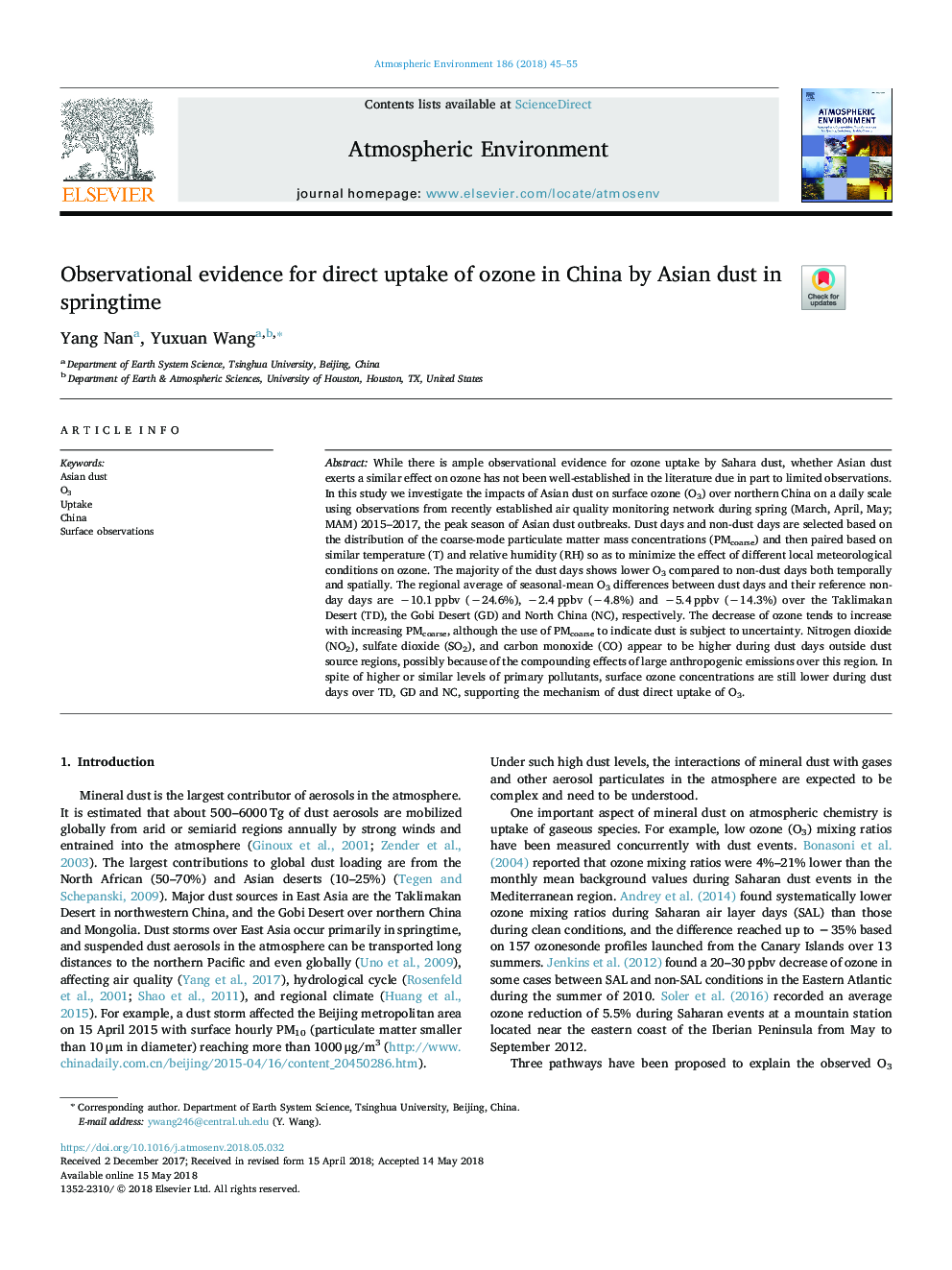| Article ID | Journal | Published Year | Pages | File Type |
|---|---|---|---|---|
| 8863665 | Atmospheric Environment | 2018 | 11 Pages |
Abstract
While there is ample observational evidence for ozone uptake by Sahara dust, whether Asian dust exerts a similar effect on ozone has not been well-established in the literature due in part to limited observations. In this study we investigate the impacts of Asian dust on surface ozone (O3) over northern China on a daily scale using observations from recently established air quality monitoring network during spring (March, April, May; MAM) 2015-2017, the peak season of Asian dust outbreaks. Dust days and non-dust days are selected based on the distribution of the coarse-mode particulate matter mass concentrations (PMcoarse) and then paired based on similar temperature (T) and relative humidity (RH) so as to minimize the effect of different local meteorological conditions on ozone. The majority of the dust days shows lower O3 compared to non-dust days both temporally and spatially. The regional average of seasonal-mean O3 differences between dust days and their reference non-day days are â10.1â¯ppbv (â24.6%), â2.4â¯ppbv (â4.8%) and â5.4â¯ppbv (â14.3%) over the Taklimakan Desert (TD), the Gobi Desert (GD) and North China (NC), respectively. The decrease of ozone tends to increase with increasing PMcoarse, although the use of PMcoarse to indicate dust is subject to uncertainty. Nitrogen dioxide (NO2), sulfate dioxide (SO2), and carbon monoxide (CO) appear to be higher during dust days outside dust source regions, possibly because of the compounding effects of large anthropogenic emissions over this region. In spite of higher or similar levels of primary pollutants, surface ozone concentrations are still lower during dust days over TD, GD and NC, supporting the mechanism of dust direct uptake of O3.
Keywords
Related Topics
Physical Sciences and Engineering
Earth and Planetary Sciences
Atmospheric Science
Authors
Yang Nan, Yuxuan Wang,
